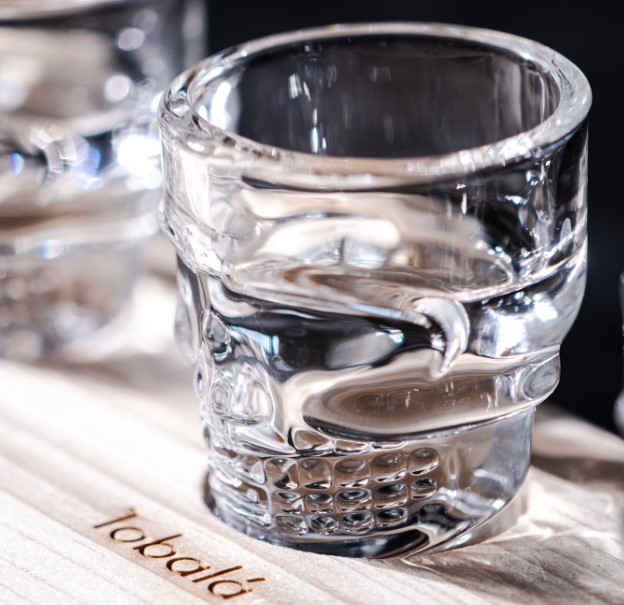
If you didn’t know it already, all Tequila is Mezcal, but not all Mezcal is Tequila. If you don’t understand, give us a moment to explain. You might not have realized until now that the broad term for agave-based spirits isn’t Tequila; it’s actually Mezcal. Tequila is simply a kind of Mezcal. Think of it like this: single malt Scotch is a type of whisk(e)y, and so is rye whiskey. And while we could spend days writing about Tequila, today is Mezcal’s day in the proverbial sun.
When it comes to Mezcal vs Tequila, while Tequila can only be made with Blue Weber Agave (along with other rules and regulations), Mezcal can be made with any type of agave. While there are more than 40 varieties, the most commonly used are espadín, tobalá, and tepeztate.
Similar to the production of Tequila, Mezcal begins with the agave hearts (or piñas). After harvesting, they’re roasted in a pit or stone ovens. This is why Mezcal is well-known to have a smokier, richer flavor than Tequila. The agave hearts are then pressed or crushed. The juice is fermented before being distilled.
Like Tequila, Mezcal is a protected denomination and can only be made in Mexico. While Tequila can be produced in Jalisco (where the town of Tequila is located) and a few other states, Mezcal can only be produced in Oaxaca, Guerrero, Michoacan, San Luis Potosi, Durango, Puebla, Guanajuato, Tamaulipas, and Zacatecas.
There are a few important categories of Mezcal. They are mezcal, artisanal mezcal, and ancestral mezcal. The first is produced using contemporary techniques and equipment like autoclaves and diffusers. Artisanal Mezcal is more traditional, with agave being roasted in pit ovens. Ancestral Mezcal is the most traditional, with agave being roasted in pit ovens along with fermentation in wooden tanks and other historic vessels. The Mezcal is even distilled in clay pots instead of stills.
Now that you know a little bit about Mezcal, it’s time to find some to drink. Lucky for you, we already did the hard work. Keep scrolling to see six of our favorite smoky mezcals to sip all winter.

Doña Vega Espadín
While Espadín is a very popular agave for mezcal production, Espadin Capon is a little less commonly used. This is the agave Doña Vega Espadín is made with. It’s hand-picked, roasted, fermented, and distilled. The result is a complex, flavorful mezcal with a ton of roasted agave, white pepper, and tropical fruit up front and a memorable smoky finish. The balance between roasted agave, fruity flavors, and smoke makes this a sublime sipper on a frigid winter night.

Del Maguey Mezcal Vida Clásico
When it comes to Mezcal, there are few brands more well-known than Del Maguey. While it makes myriad memorable expressions, its best for smoke fans is its Del Maguey Mezcal Vida Clásico. It all begins with Espadín agave. It’s roasted and naturally fermented before being distilled two times in woo-fired copper stills. The result is a sippable, warming Mezcal with notable flavors like roasted agave, tropical fruits, honey sweetness, cinnamon, ginger, and smoky, charred peppers. Spicy, sweet, and smoky, this is a highly memorable mezcal for the winter months.

400 Conejos Joven Oaxaca
If you only buy one smoky Mezcal on this list, make it 400 Conejos Joven Oaxaca. This award-winning Mezcal is known for its balance and complex flavor profile, featuring a nose of roasted agave, tropical fruits, and gentle smoke. Sipping it reveals even more vegetal, roasted agave, wood, light fruit, and robust campfire smoke. It’s a value sipper that deserves to be enjoyed neat or on the rocks.

Mezcal Vago Elote
This popular Mezcal gets its name because, while it starts as a classic Mezcal, distiller Aquilino Garcia Lopez adds roasted corn from his farm to complete the flavor profile. The result is a spirit that begins with a nose of roasted agave, tropical fruits, and light smoke and a palate of sweet honey, vegetal agave, caramelized pineapple, herbal notes, and a ton of robust, memorable smoke. The finish is a symphony of sweet corn, which ties all the other flavors together nicely.

Creyente Mezcal Joven
This joven Mezcal is made from Espadin agave grown in two separate areas and combined to make a nuanced, complex flavor. The first is Tlacolula, which is known for its rich terroir. The second is Yautepec, which is known for its high-elevation, mountainous geography. The result is a rich, sweet, mellow mezcal with a ton of citrus peel, cracked black pepper, tropical fruit, and rich smoky flavors. It’s the kind of sweet, smoky Mezcal you’ll enjoy sipping neat on a cold winter night.

Ilegal Joven
With a name like Ilegal, you might assume there’s something nefarious or criminal about this mezcal brand. But, as mischievous as it seems, it’s simply a great mezcal. Especially its smoky, memorable Joven expression. This award-winning Mezcal is known for its mineral, herbal, fruity, smoky flavor profile that makes it a great choice for mixing into your favorite cocktail or sipping neat or on the rocks. It’s truly a versatile spirit and one that belongs on your home bar cart or liquor cabinet throughout the winter months (and beyond).



